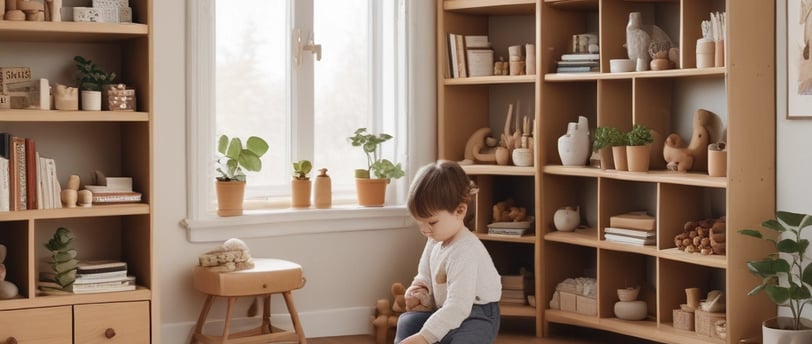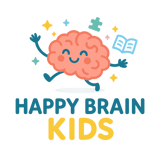Early Childhood Education at Home: A Simple Montessori Guide for Parents of Kids Ages 0–6
Are you curious about how to bring Maria Montessori’s learning through play approach into your home? Many parents today are exploring the benefits of early childhood education through the Montessori method—and for good reason. With its focus on independence, hands-on learning, and respect for the child, Montessori at home can create a calm, enriching environment for toddlers and preschoolers. This approach is highly valued in early childhood education courses, early childhood and education courses, and ECE courses around the world. It’s also a foundational element in many of the best early childhood education programs in the world and best ECE programs. If you're interested in early childhood care and education courses or looking to complement what your child might experience in formal early childhood courses, bringing Montessori into your home is a powerful and accessible step. And if you’re wondering how to do Montessori at home without feeling overwhelmed—or without buying expensive materials—you’re not alone. Good news: It’s easier than you thin


What Is Montessori Learning Through Play?
At its core, Maria Montessori learning through play encourages children to learn by doing. Whether it’s pouring water, sorting objects, or building puzzles, young children naturally develop cognitive and motor skills through play-based tasks that are meaningful to them—an approach deeply aligned with the principles of early childhood education.
In the Montessori method at home, this means creating an environment that supports independence, a key concept emphasized in early childhood education courses, early childhood and education courses, and ECE courses worldwide. By setting up your space so that your child can independently access toys, tools, and activities, you’re actively practicing concepts taught in the best early childhood education programs in the world and recommended in early childhood care and education courses.
You’ll guide—not direct—your child and trust in their ability to learn independently, just as modeled in the best ECE programs and foundational early childhood courses.Setting Up a Montessori Home Environment
You don’t need a dedicated classroom to do Montessori at home. In fact, the process of setting up Montessori at home can be simple and budget-friendly.
Here are a few steps to get you started:
Use child-sized furniture to promote independence
Rotate toys and activities weekly to avoid clutter and overstimulation
Display materials on open, low shelves
Keep learning materials real, simple, and purposeful
Want a full walkthrough of a Montessori at home setup?
See the guide: Maria Montessori Learning Through Play – Montessori Education at Home Guide
Montessori Techniques at Home That Actually Work
If you’re searching for practical Montessori techniques at home, try these beginner-friendly ideas that align with the principles of early childhood education and are often taught in early childhood education courses and ECE courses:
Practical Life Tasks: Let your child help with folding laundry, sweeping, or preparing snacks—core elements in early childhood care and education courses.
Sensorial Activities: Offer items they can touch, smell, sort, and explore—like beads, fabrics, or color-matching games, all of which support sensory development emphasized in the best early childhood education programs in the world.
Language Learning: Use simple cards with real photos and labels to build vocabulary—an effective strategy promoted in early childhood and education courses and early childhood courses.
These techniques are not only engaging but also mirror the best practices used in the best ECE programs, making them ideal for home use. With consistency, you’ll be amazed at how much children can do on their own.
Want to Learn More? Get the Full Montessori at Home Book
If you're ready to dive deeper, our brand-new ebook is the perfect starting point for parents, caregivers, and educators interested in early childhood education:
Maria Montessori Learning Through Play: A Montessori Education at Home Guide for Ages 0–6
This practical guide aligns with what’s taught in early childhood education courses, early childhood and education courses, and ECE courses, and is inspired by methods used in the best early childhood education programs in the world.
Inside you’ll find:
• A step-by-step Montessori at home setup guide
• Real-world Montessori techniques at home and play ideas
• Printables, daily routine checklists, and visual schedules
• Tips for Montessori training at home, even with toddlers
• Advice on how to Montessori at home in small apartments or with limited time
Whether you're pursuing early childhood courses, early childhood care and education courses, or simply want the best early childhood education experience at home, this ebook is designed for you.
🎉 Launch Price: Only $9.99 (Limited Time)
➡️ Download the Montessori at Home Guide Here
Final Thoughts
The Montessori method at home is more than just an educational approach—it’s a foundation of early childhood education that empowers children to explore, grow, and thrive.
Whether you’re homeschooling, supplementing preschool, or simply creating a more mindful space for your child, at-home Montessori aligns with principles taught in early childhood education courses, ECE courses, and early childhood and education courses. It’s also widely recognized in the best early childhood education programs in the world and recommended in early childhood care and education courses.
✨ Start small. Stay consistent. And let your child lead the way—just as emphasized in the best ECE programs.
💬 Got questions about how to set up your space or which materials to use? Drop them in the comments or check out our full guide here:
👉 Maria Montessori Learning Through Play – A Montessori at Home Book for Ages 0–6
Activities
Fun and educational printables for curious kids.
Explore
Shop
© 2025 Happy Brain Kids . All rights reserved.
